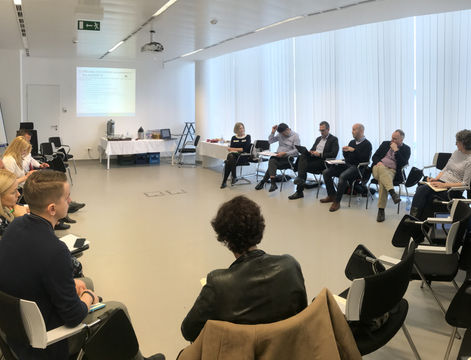
Reflection from trip to Debrecen by James Wilson
7 Interregional Workshop of Clusters3 partners in Debrecen. Progress with action plans.
Project background - WHY?
Regional authorities across Europe are aware of the challenges and issues regarding SMEs dimension. And they know the importance of the contribution that can be expected from competent cluster organisations supported by a cluster policy.
CLUSTERS3 project engages seven regional and national authorities. All of them are willing to learn and improve their practices from this project. Participation of TCI Network of practitioners and experts as advisory partner reveals also the interest of this issue at a larger scale.
Project objective - WHAT?
CLUSTERS3 main objective is to improve the implementation of cluster policies and their coordination with other competitiveness related policies, in the framework of RIS3, boosting Growth and Job creation through the insertion of SMEs in Global Value Chains.
Project methodology - HOW?
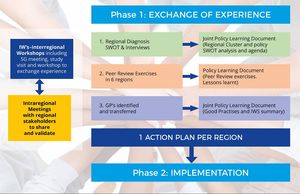
Watch the video to know more about Clusters3 project!
€1,592,378.00
Research and innovation
In the Basque Country Cluster Organisations manage specific committees and working groups of interested members and organisations to produce cooperation proposals to be submitted to program calls like Etorgai and Gaitek. This two programs are financed with FEDER contribution. Under the axis “OT1- Potenciar la investigación, el desarrollo tecnologico y la innovación” of the Regional Operational Program of the Basque Country (ROPBC). Cluster policies enhance the capability of successful cooperation among SMEs by co-financing activities or providing technical assistance to cluster organisations.SMEs are the true back-bone of the regional economies, but due to the lack of dimension they cannot face the global challenges alone. Cooperation is a must for SMES to succeed. Cluster initiatives are devoted to facilitate such cooperation,strong clusters help to develop and agglomerate specific knowledge and skills and attract investments and talent to the territory. Cluster organisations provide business intelligence, initiate workgroups,help SMEs identify common challenges in the fields of Innovation, Technology, R&D and Internationalisation and help SMEs to define common goals and implement projects in cooperation.Due to the multiplier effect of cluster activity the need to overcome the traditional sectorial vision in order to build up new cross cluster value chains to enter new emerging high growth domains according to regional smart specialisation strategies (RIS3) is strategic.
RIS3 LV2020 smart specializations:bioeconomy,medicine&health, IT & automation & low carbon-emission energy. Priorities are:P1.Increasing the ability of business entities to create and absorb knowledge and implement innovations, particularly in areas of RIS3.P2.Increasing the ability of entities operating in the science and research sector to create and commercialise knowledge in areas of RIS3.P3.Strengthening business environment institutions and public administration bodies open to innovation.Clust&RIS3 focuses on P2 improving needs such as:1.Raising the innovativeness of cluster initiatives 2.Increasing the effectiveness of initiating and managing cooperation with the science and the business environment institutions.3.Enhancement of platforms for better RIS3 implementation.4.Leverage of resources for innovation.5. Increasing participation of business in interregional/international activity.So far the region has not developed specific tools or coherent policy for leveraging cooperation of SMEs and this is the reason why the SME sector is dispersed.The ROP has a budget of ERDF1.6 bn€. It is one of 16OP in Poland. Its aim is increasing regional competitiveness on the basis on the endogenous potentials. Axis1 Research & Innovation (TO1) and Axis 3 Competitiveness of enterprises (TO3) are one of financing sources of RISLV2020.Although there is no specific measure dedicated to cluster/networking policy in ROP, clusters and SME can apply for funds within: Axis1 and 3 of ROP
ROP Piedmont Region ERDF2014-2020-Priority Axis1. Research, technological development and innovation.TO1.1 Strengthening research, technological development & innovation -Investment priority1.1.b–Action1.1b.1.2“Supporting R&D collaborative activities for the development of new sustainable technologies, products and business services. This Action supports R&D collaborative activities as part of the ROP. The "Innovation poles"/Clusters are a tool to be implemented, in continuity with the previous policy cycle, to facilitate, among the companies that generate and share knowledge, industrial research, pre-competitive development and experimental new technologies, products and services. In Piedmont there are 12 Innovation Poles in operation that act as a stimulus for innovative activity, encouraging interaction, the common use of facilities and exchange of knowledge and experience, as well as contribute to technology transfer. The report "Lessons Learned", elaborated by the Regional Evaluation Team highlighted the importance of building high quality networks & partnerships, so that will be improved within this new OP. The rationalisation and diversification of activities and projects in these Clusters should be also improved, based on the efficacy within the past programming period, supporting the activities of the managers of the poles to stimulate the preparation of RTD projects and the "demand" for services for innovation of the members to the clusters.
In 2007-2013 programming period for EU funds 11 clusters were supported. In the upcoming program it is planned to support 14 clusters (ERDF funding).The "Cluster Programme” will be co-financed by ERDF under the OP "Growth and Employment” 3.2.IP -supporting the capacity of SMEs to engage in regional, national and international markets & innovation processes.The objective is to increase competitiveness, export capacity and coop of SMEs to promote growth of productivity and high value added products and services. Will support coop and networking between SMEs, education and research institutions and other partners to develop common marketing, internationalisation, research & other projects to develop new products and access new markets. The programme is in an early stage of design.Cluster initiatives are a new measure among the SME support instruments in Latvia and are eager to find out the best practices to achieve the best results and highest impact on the economy through smart investment. Latvian SMEs are still characterised by low productivity, export performance and lack of cooperation as well as a much larger share of low-tech products in the structure of Latvian economy than the EU average. Supporting cluster initiatives is an important tool to boost the cooperation between different actors. The performance of SMEs & clusters has to be flexible to respond to the changing needs of the involved parties, giving the opportunity to improve the programme on a regular basis.
GINOP is the largest total fund from the 7 OP of Hungary with a sum of 2,586 billion HUF.The OP aims to stimulate the economies of the less developed regions in Hungary. Its most important priorities are the competitiveness of SMEs, research & innovation, and employment. The OP also aims to develop the tourism industry, enterprises' energy efficiency, and information and communication technologies. The funding priorities of the OP are the following: increasing the competitiveness and productivity of SMEs; RTDI; info communication developments; energy; employment; competitive labour force; tourism; financial instruments.
The 1st priority of GINOP is the Improvement the competitiveness of SMEs, where one of the measurements is 1.7. Establishment of a marketable and cooperative SME sector. The result to be reached here is the improvement of competitiveness, market share and supply of goods through the improvement of willingness to cooperate, the enhancement of the efficiency of current and future cooperation and the establishment of conditions for the market entry. Cluster development is definitely one of the tools to reach these results. Therefore, among others, cluster management services should be improved in order that clusters effectively contribute to technology transfer and knowledge sharing among companies. Furthermore, the improvement of organisational operation of clusters and other networks, as well as entering new international markets also should be supported.
SME Competitiveness priority in support of Growth & Jobs within the Scottish ERDF Programme 2014-2020.Structural funds investment has the objective of enhancing the competitiveness of SMEs through building capacity and capability in the main drivers of business growth – innovation, internationalisation, leadership/ entrepreneurship and access to finance. In the Highlands and Islands (H&I) of Scotland, these priorities reflect infrastructure gaps in a region because of low population density and a dispersed business base.The region has many small businesses that lack the capability to grow to scale, to collaborate and to improve their competitiveness.These are barriers to growth. We seek to achieve a better understanding of how to build regional and international clusters, focusing our investment on those sector and subsector opportunities that enable our businesses to integrate into globally competitive supply chains. Building our knowledge and implementing new policy approaches will deliver greater results for the investments we make and for our use of Structural Funds in the current programme. The investment priorities are: 1b “Promoting business investment in R&I developing synergies between enterprises, RTD & HIE; promoting investment in product and service development, technology transfer, clusters and open innovation through RIS3 among others and 3d“Supporting SMEs to grow in regional, national and international markets & to engage in innovation processes”
The 2014-20 Northern Ireland (NI) ERDF Investment for Growth and Jobs Programme sets ambitious targets to develop the economy through knowledge exploitation, innovation commercialisation, export growth, job creation and increased use of renewable energy. To deliver on these targets the NI Executive has published the following strategies:
•NI Economic Strategy (NIES): sets out a vision for 2030 for an economy with a sustainable and growing private sector, where more firms compete in global markets, increasing employment and prosperity.
•Innovate NI- Innovation Strategy 2014–25:recognises that the economy has been overly dependent on the public sector, constraining economic growth and contributing to a very large fiscal deficit.
•NI Smart Specialisation: recognises that NI has both the capability and potential to compete on a global basis and identifies focus on high added value & crosssectoral opportunities based on KETs.
We will improve the policy instrument by developing and applying learning in the following areas: how cluster policy can deliver against the economic objectives; contrasting impact and effectiveness of aligned cluster policy on specific locations, economic maturity and model;how policy goals such as innovation, internationalisation, competitiveness & collaboration can be addressed by clusters and RIS3 to achieve broader societal goals; Identifying opportunities in partnership to develop model demonstrator "regions as cluster policy lighthouse initiatives’.

7 Interregional Workshop of Clusters3 partners in Debrecen. Progress with action plans.
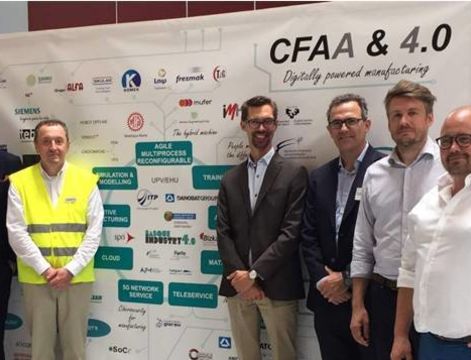
Skåne visits Basque Aeronautics Advanced Manufacturing Center (CFAA) a Technology Demonstration and Validation facility with a cross-Cluster component.
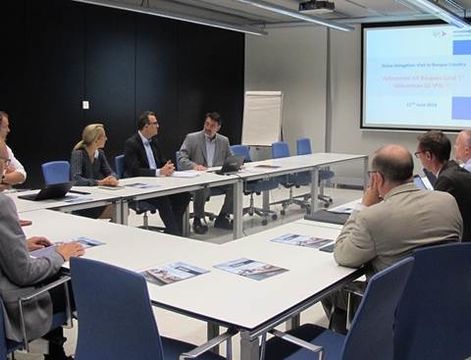
Last week SPRI hosted and co-organised a Cluster Study Visit from Region Skåne to the Basque Country.
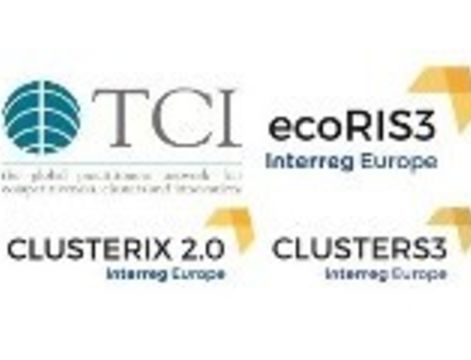
TCI Cluster Evaluation workshop took place in Cork on the 14th and 15th of May 2018. The themes of cluster and smart specialisation evaluation.
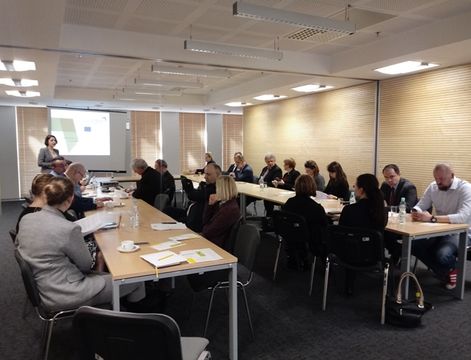
Stakeholders of cluster policy in Lubelskie met 26 March to talk about the action plan.

‘Titanic’ Inspiration for thinking about Industrial Transformation and Clusters
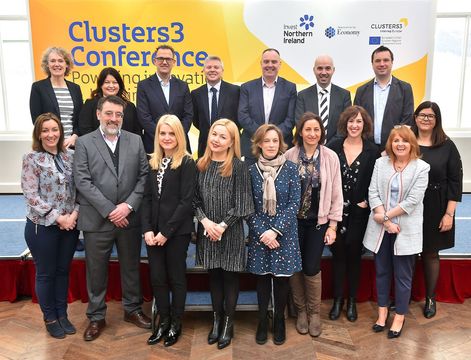
The Clusters3 project partners met for the 6 Interregional Workshop in Belfast to discuss cluster capacity building.
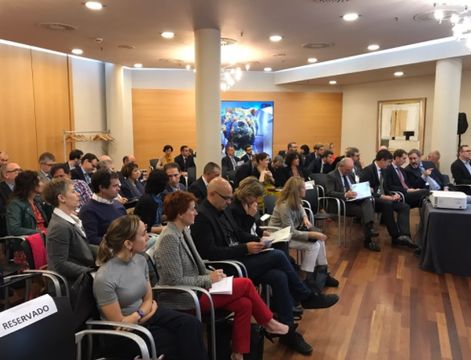
2017 edition of Basque Cluster day: more than 100 people reflected on the future of #clusters in Euskadi (& beyond)
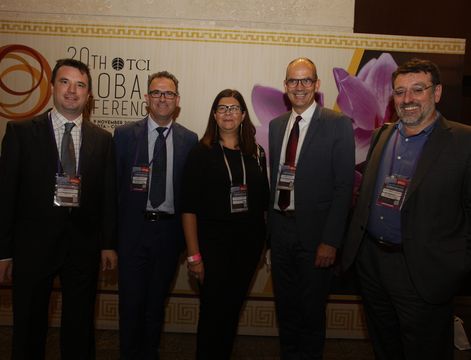
CLUSTERS3 Project partners from SPRI Basque Business Development Agency – Government of the Basque Country gathered at the 20th TCI Global Conference.

Clash-ter night during the CLUSTERS3 partners meeting in Riga.